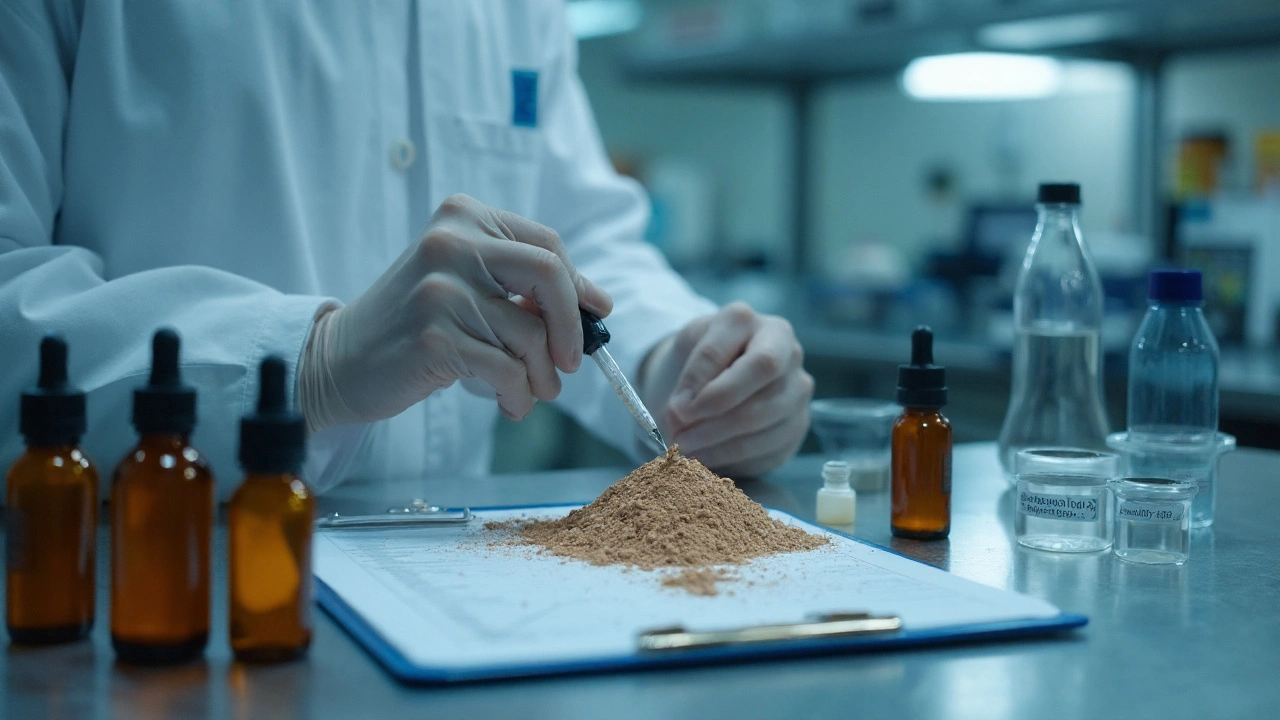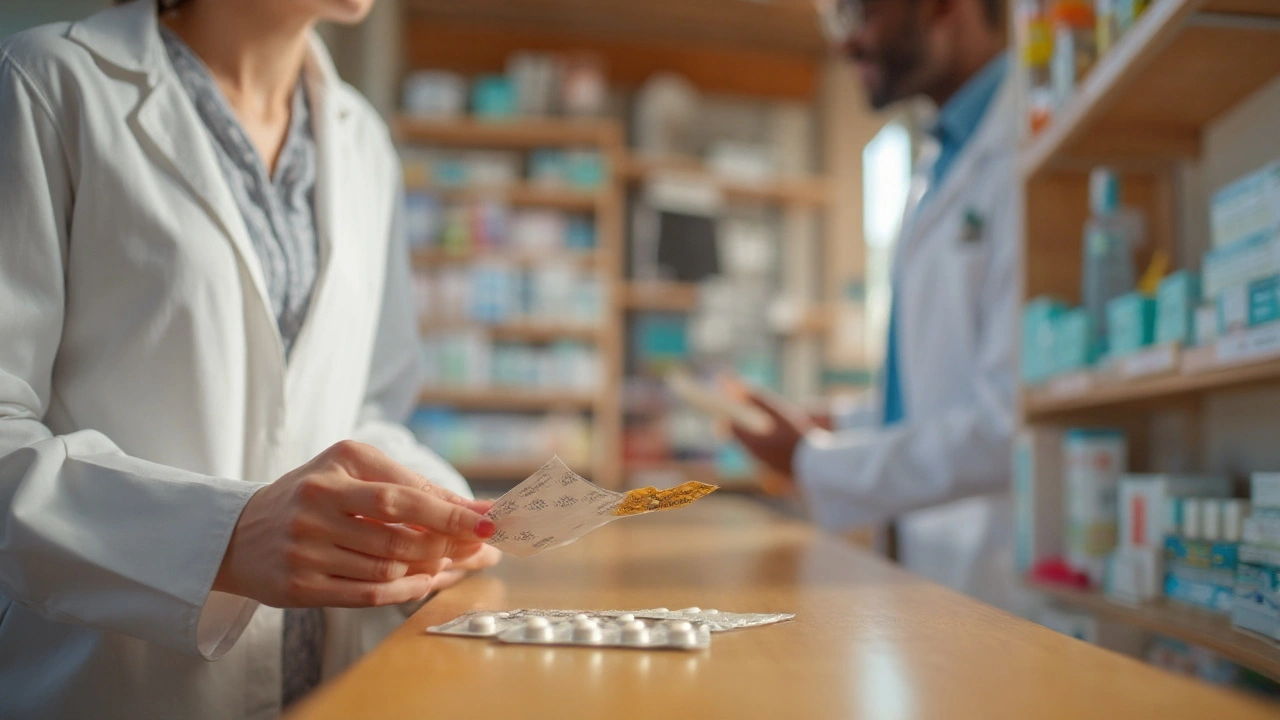Here’s the truth: a lot of supplements promise calm, sharper thinking, and better sleep. Most don’t deliver. Winter cherry-better known as ashwagandha-actually has a growing pile of human trials behind it, especially for stress and sleep. It isn’t magic, and it’s not right for everyone, but if you want fewer 3 a.m. wake-ups and a steadier mood, it’s worth a serious look.
I live in Dunedin, where winter bites a little longer and darker. People here lean on small daily rituals: a hot brew, a brisk hill walk, something herbal before bed. If you’ve tried magnesium or chamomile and still feel wired-tired, winter cherry might be your next sensible experiment. This guide keeps it practical: what it can do, how to take it, how to pick a decent product, and when to skip it.
TL;DR: Quick take on winter cherry
- What it does best: small-to-moderate help with stress, anxiety, and sleep quality; modest support for strength and recovery in training.
- Typical dose: 300-600 mg/day of a root-only extract standardised to 2.5-5% withanolides, or 125-250 mg/day of a higher-potency extract (around 10% withanolides). Whole root powder: 3-6 g/day.
- When to take: night for sleep; morning or split dosing for stress/workouts; always start low for 1 week.
- Safety: mostly mild side effects (stomach upset, drowsiness). Avoid in pregnancy, breastfeeding, active thyroid issues, autoimmune flares, and significant liver disease. Interacts with sedatives, thyroid meds, and drugs for blood sugar and blood pressure.
- Buying tip: choose root-only extract, clear withanolide % on label, and third‑party testing. Skip proprietary blends that hide amounts.
What winter cherry is-and what it can (and can’t) do
Winter cherry is the common name for Withania somnifera. Most supplements use the root, extracted to concentrate compounds called withanolides. In Ayurveda it’s an adaptogen-the idea is simple: help the body handle stress better. Mechanistically, modern research points to effects on the HPA axis (your stress-response loop), GABA signalling (your calming system), thyroid hormones in some people, and anti‑inflammatory pathways.
What the evidence says as of 2025:
- Stress and anxiety: Multiple small randomized trials and meta-analyses report small-to-moderate reductions in perceived stress and anxiety scores over 6-12 weeks, often alongside lower waking cortisol. Source: NIH Office of Dietary Supplements, Ashwagandha Fact Sheet (reviewed 2024); Journal of Clinical Medicine, 2019 meta‑analysis.
- Sleep: Trials in people with insomnia or poor sleep show improvements in sleep latency (time to fall asleep) and sleep efficiency after 6-8 weeks of nightly dosing. Source: Cureus, 2020 randomized trial; Journal of Herbal Medicine, 2022 review.
- Athletic performance: Resistance training studies report modest gains in strength, power, and recovery versus placebo, especially in untrained or recreational lifters. Source: Journal of the International Society of Sports Nutrition, 2015 randomized trial.
- Cognition: Early studies suggest small benefits to attention and processing speed in stressed adults. The evidence is mixed and still short-term. Source: Phytotherapy Research, 2017 RCT.
- Blood sugar and lipids: Signals are inconsistent and usually small. Not a substitute for medical care. Source: NIH ODS Fact Sheet (2024).
- Thyroid: One small RCT in subclinical hypothyroidism showed T4/T3 increases and TSH reductions. That’s a flag: people with hyperthyroidism should avoid it; those with hypothyroidism on medication should only consider it with medical supervision. Source: Journal of Alternative and Complementary Medicine, 2018.
- Fertility/sex hormones: Some small trials in men show increased testosterone and improved semen parameters, mainly in stressed or infertile populations. Evidence in women is limited; there’s a small signal for sexual function but data are early. Sources: Evidence‑Based Complementary and Alternative Medicine, 2015; American Journal of Men’s Health, 2019.
What it won’t do: cure depression, replace therapy, or offset poor sleep habits. Think of winter cherry as a nudge. It works best when you’ve already tightened the basics: steady bedtime, morning light, protein at breakfast, caffeine cut by early afternoon.
Names you’ll see on labels: KSM‑66 (root‑only, ~5% withanolides), Sensoril (root+leaf, ~10% withanolides), and other extracts reporting higher “withanolide glycosides.” More potent isn’t always better; tolerance and side effects climb with dose and concentration.
How to choose and dose winter cherry (simple rules, examples, and a table)
Use these fast rules of thumb to keep it simple:
- Pick root‑only if you’re new. Root‑only extracts have the longest safety track record.
- Look for a clear withanolide percentage (2.5-5% for most root-only extracts; around 10% for many root+leaf extracts). No % on label? Skip it.
- Choose third‑party tested products (USP, NSF, Informed Choice, BSCG, or HASTA certification for athletes in AU/NZ).
- Avoid proprietary blends that hide ingredient amounts.
Starter dosing (adults):
- Root‑only extract (2.5-5% withanolides): 300 mg nightly for 7 days. If tolerated and needed, increase to 300 mg twice daily (morning + night) or 600 mg nightly.
- Higher-potency extract (~10% withanolides): 125 mg nightly for 7 days. If needed, increase to 125 mg twice daily or 250 mg nightly.
- Whole root powder: 3-6 g/day with food, split doses; it’s bulkier and tastes earthy.
Timing by goal:
- Sleep and anxiety at night: Take the bigger chunk 60-90 minutes before bed.
- Daytime stress at work or caregiving: Split AM + PM at lower doses.
- Training support: AM or post‑workout on training days, and evening on rest days.
Cycle suggestion: 8-12 weeks on, then 2-4 weeks off. If there’s no clear benefit after 8 weeks, stop.
How to read a label, fast: check serving size, standardisation (withanolides %), whether it’s root‑only, the batch lot number, and a visible third‑party seal. Imported products sold in NZ should still show a local contact and batch info for recalls.
| Form | Typical standardisation | Typical daily dose | Best for | Watch‑outs |
|---|---|---|---|---|
| Root‑only extract (e.g., KSM‑66) | ~2.5-5% withanolides | 300-600 mg | Beginners; sleep; steady stress support | May cause drowsiness at higher doses |
| Root+leaf extract (e.g., Sensoril) | ~10% withanolides | 125-250 mg | People needing smaller capsules; daytime calm | More potent; start low to avoid dizziness |
| High‑potency WG extracts | Withanolide glycosides listed (varies) | 120-240 mg | Experienced users who tolerate extracts well | Potent; check exact equivalence on label |
| Whole root powder | Not standardised | 3-6 g | Traditional prep; smoothies; cost‑effective | Bulky; variable potency; taste is earthy |
Simple dosing decision tree:
- If your main goal is sleep: start with 300 mg root‑only at night; if you wake groggy, cut to 150-200 mg.
- If your main goal is daytime stress: 150-300 mg morning + 150-300 mg evening.
- If you train 3-5 days/week and want recovery help: 300 mg morning on training days; 300 mg night on rest days.
Stacks that make sense (and ones that don’t):
- Reasonable: magnesium glycinate at night; L‑theanine 100-200 mg in the afternoon; omega‑3s for inflammation; a short morning walk for light exposure.
- Skip: doubling up with strong sedatives (kava, phenibut) or using it as a mask for high caffeine habits.
How soon you’ll feel it: some people sleep deeper within a week; most stress/anxiety changes show up after 2-4 weeks; strength gains need 8-12 weeks of training.

Safety, interactions, and who should avoid it (NZ‑focused, 2025)
Common side effects: stomach upset, loose stools, nausea, headache, and sleepiness-usually dose‑related and improve when you lower or split the dose. Take with food if your stomach is touchy.
Liver: rare cases of liver injury have been reported, typically within 2-12 weeks of starting, and more often with high‑potency extracts or multi‑ingredient blends. Watch for yellowing of eyes/skin, dark urine, pale stools, or constant itching. Stop and seek care if these appear. Sources: NIH LiverTox (updated 2023); Hepatology Communications case reports, 2022.
Thyroid: ashwagandha may push thyroid hormone up in some people. Avoid if you have hyperthyroidism. If you have hypothyroidism and take levothyroxine, talk to your GP first; you may need labs checked 4-6 weeks after starting. Source: Journal of Alternative and Complementary Medicine, 2018 RCT.
Blood sugar and blood pressure: it can mildly lower both. If you use meds for diabetes or hypertension, monitor more often when you start or change dose. Discuss with your prescriber.
Pregnancy and breastfeeding: avoid. There’s traditional concern about uterine effects and a lack of strong safety data in humans. Source: WHO Monographs on Selected Medicinal Plants, Withania somnifera; NIH ODS Fact Sheet (2024).
Autoimmune conditions (e.g., Hashimoto’s, rheumatoid arthritis, lupus): possible immune‑modulating effects mean caution. If you’re stable and keen to try, do so only with specialist guidance.
Drug interactions worth flagging:
- Sedatives and sleep meds (benzodiazepines, z‑drugs), alcohol, strong antihistamines: additive drowsiness.
- Thyroid meds: potential need to adjust dose after starting.
- Immunosuppressants: theoretical opposition of effects.
- Drugs for diabetes/hypertension: additive lowering effects.
Allergies and plant confusion: “winter cherry” also names a different plant (Physalis species). For supplements you want Withania somnifera, not Physalis. Check the Latin name on the label.
NZ context (2025): winter cherry is sold as a dietary supplement. Products can’t claim to treat diseases and don’t go through the same pre‑approval as medicines. If you have a side effect, report it to CARM (the Centre for Adverse Reactions Monitoring) via your pharmacist or GP to help improve safety data here. Athletes: ashwagandha is not on the WADA Prohibited List, but choose products with Informed Choice, BSCG, or HASTA certification to reduce contamination risk.
Who should skip it entirely:
- Pregnant or breastfeeding people
- Anyone with active hyperthyroidism
- People with a current, unexplained liver issue
- Children and teens (safety data are thin)
Who should talk to their doctor first:
- People on meds for anxiety, sleep, thyroid, blood pressure, or blood sugar
- People with autoimmune disease or on immunosuppressants
- Anyone scheduled for surgery (stop at least 1-2 weeks prior)
Mini‑FAQ: straight answers to common questions
- Is winter cherry the same as ashwagandha? Yes-here it refers to Withania somnifera. It’s not the same as the lantern‑like Physalis plants sometimes called winter cherry in gardening books.
- How long until I notice anything? Sleep can improve in 7-10 days. Stress and mood usually need 2-4 weeks. For gym performance, allow 8-12 weeks with a proper program.
- Does it cause weight gain? No direct evidence. Some people feel hungrier as stress eases or sleep improves; that’s behavioural, not a metabolic effect of the herb.
- Can women take it? Yes, but avoid during pregnancy and breastfeeding. There’s no solid evidence of harmful androgen effects in women at common doses.
- Can I take it with antidepressants? Sometimes, but check with your prescriber. Watch for extra sedation.
- Will it make me groggy in the morning? If you overshoot the dose or take it too close to bedtime, yes. Move the dose earlier or cut it by half.
- Is leaf extract riskier than root? Most traditional use and much of the safety data are with root. Some case reports of liver injury involved products likely containing leaf or very high potency extracts, but data are not definitive.
- Is organic better? It often means fewer pesticide residues, but potency depends more on extraction and standardisation. Prioritise a clear withanolide % and third‑party testing first.
- Any food interactions? Take with a small snack if your stomach is sensitive. Limit alcohol when starting due to extra drowsiness.
- Will it show up on a drug test? It’s not a banned substance. Still, athletes should use certified products to avoid contamination surprises.
Next steps, checklists, and troubleshooting
If you’re ready to try winter cherry, keep it methodical so you can tell if it’s doing anything.
Quick start checklist:
- Goal set: write one sentence (e.g., “fall asleep 20 minutes faster” or “feel less wired at work”).
- Pick the form: root‑only extract, 2.5-5% withanolides, 300 mg capsules.
- Quality check: third‑party testing seal; Latin name on label; withanolide %; batch number.
- Dose plan: 300 mg nightly for 7 days, then reassess. If needed, add 300 mg in the morning.
- Measure something: rate sleep quality and stress 0-10 each day for 2 weeks.
- Stop rule: if no clear benefit by week 8, discontinue.
Simple tracking: each night note your bedtime, wake time, number of wake‑ups, and a 0-10 sleep score. Each afternoon rate stress 0-10. This beats guessing.
Troubleshooting:
- Morning grogginess: move the night dose 2-3 hours earlier or cut in half.
- Stomach upset: take with food; switch to a lower‑dose, root‑only product; avoid strong coffee on an empty stomach near your dose.
- Headache or dizziness: you may be sensitive to higher withanolide %-step down to a 2.5-5% extract or try whole root powder.
- No effect after 4 weeks: confirm you’re using a standardised product; consider splitting dose AM/PM; if still nothing by 8 weeks, stop.
- New anxiety or wired feeling: you may be overdosing or taking it too close to wake time. Reduce or move to early evening.
What to pair with it for best results:
- Sleep: morning light (10-15 minutes outside), a consistent bedtime, and magnesium glycinate 200-300 mg with dinner.
- Stress at work or study: short afternoon walk, 3-5 minutes of slow breathing, and a caffeine cutoff 8 hours before bed.
When to seek medical advice fast: signs of liver trouble (yellow eyes/skin, dark urine), rapid heartbeat, severe anxiety, rash or swelling, or if you’re on multiple medications and notice big changes in blood pressure or blood sugar.
Notes on sourcing here in New Zealand (2025): pick brands that publish test certificates on request, list Withania somnifera (root) on the label, and state the withanolide percentage. Local pharmacies in Otago and nationwide online retailers stock both root‑only and higher‑potency options. If in doubt, ask the pharmacist to help you compare extracts and check for interactions with your meds.
Evidence and references you can look up:
- NIH Office of Dietary Supplements. Ashwagandha Fact Sheet. Reviewed 2024.
- LiverTox: Clinical and Research Information on Drug-Induced Liver Injury. Ashwagandha. Updated 2023.
- Wankhede et al. Examining the effect of Withania somnifera supplementation on muscle strength and recovery. Journal of the International Society of Sports Nutrition. 2015.
- Sharma et al. Efficacy and Safety of Ashwagandha in Subclinical Hypothyroid Adults. Journal of Alternative and Complementary Medicine. 2018.
- Cureus. A Randomized, Double‑Blind Study of Ashwagandha for Insomnia. 2020.
- WHO Monographs on Selected Medicinal Plants: Withania somnifera.
One last tip: don’t chase every claim you see online. Anchor your choice to a clear goal, track it, and keep your dose conservative. That way you’ll know if winter cherry is pulling its weight-or if it’s just another bottle in the cupboard.
By the way, if you landed here for ashwagandha benefits, the short list is calm, steadier sleep, and a small edge in training-when you pair it with good habits.




20 Comments
Robert Gallagher
Been taking 300mg of KSM-66 nightly for 3 weeks now and my sleep’s actually solid for the first time in years. No more 3am panic-scrolling. Just quiet. Still feel a little foggy in the morning if I take it past 8pm though.
Nicole Carpentier
As someone who moved from India to the US, I can say this herb’s been in my grandma’s medicine cabinet longer than most of us have had smartphones. It’s not magic, but it’s not snake oil either. Just don’t expect it to fix your 2 a.m. TikTok habit.
Eric Pelletier
For those asking about bioavailability: the withanolide % is critical, but don’t ignore the extraction method. Ethanol-based extracts (like KSM-66) have better absorption than water-only. Also, avoid capsules with magnesium stearate-it can inhibit absorption. Look for cellulose or rice flour fillers instead.
And yes, the 8-12 week on, 2-4 off cycle matters. Chronic use without breaks can blunt HPA axis modulation. I’ve seen it in my clinical practice.
Hadrian D'Souza
Oh wow, another ‘natural remedy’ guru. Next you’ll tell me turmeric cures cancer and yoga fixes my herniated disc. This isn’t medicine, it’s spiritual capitalism dressed in Sanskrit. If you need a herb to calm you down, maybe try not living like a stressed-out robot for 16 hours a day.
Also, ‘winter cherry’? That’s not even the right common name. It’s ashwagandha. Stop rebranding ancient herbs like they’re a new Apple product.
Jenna Hobbs
THIS. I was skeptical too-until I started tracking my sleep with my Apple Watch. My deep sleep went from 1h12m to 2h08m in 18 days. I cried the first morning I woke up without my heart racing. This isn’t placebo. It’s biology meeting tradition. Thank you for writing this with so much honesty.
Vivian Quinones
Why do Americans always think herbs are magic? In India we use it like salt. You don’t worship it, you just use it. Also, if you’re on thyroid meds, you better talk to your doctor. My aunt stopped her levothyroxine for this and ended up in the ER.
Nonie Rebollido
Just tried it last night. Took 300mg. Slept like a rock. Woke up at 6:30am feeling… calm? Weird. I’m not even mad about it. 🤷♀️
Abhay Chitnis
Bro, this is just a fancy placebo. I took it for 2 months. No difference. Also, the whole ‘adaptogen’ thing is pseudoscience. Your body doesn’t need ‘adapting’-it needs sleep, food, and less doomscrolling. 😎
Stacy Reed
I read your entire post like it was a sacred text. You clearly understand the soul of this herb. I’ve been taking ashwagandha since my divorce, and honestly, it’s the only thing that made me feel like I could breathe again. You’re not just sharing info-you’re holding space for people who’ve been broken by modern life.
But… I’m wondering… do you think it’s okay to take it with CBD? I’ve been using 15mg nightly and it feels like they hold hands in my nervous system. I don’t want to cross a line though. I just want to feel safe in my own skin again.
Andy Smith
Stacy, your comment is deeply touching-but please don’t combine ashwagandha with CBD without medical supervision. Both affect GABA and cortisol pathways, and stacking them can cause excessive sedation or paradoxical anxiety in sensitive individuals. Also, CBD can inhibit CYP3A4, which metabolizes withanolides. A 12-hour gap between doses is safer. Your emotional honesty matters, but safety matters more.
Ophelia Q
Thank you for saying that, Eric. I’ve been taking both and felt foggy for a week-didn’t realize it was the combo. I’ve spaced them out now and feel like myself again. 🙏
Rekha Tiwari
From India to the world ❤️ Ashwagandha is not a trend. It’s a legacy. My grandmother used to grind the root with milk and honey for my uncle when he had exams. He got into IIT. Coincidence? Maybe. But I still take it before big meetings. Simple. Safe. Strong.
And yes, if you’re on meds-talk to your doctor. But don’t let fear stop you from trying something gentle that’s been helping people for 4,000 years.
Robert Spiece
Look, I get it. You want to believe in something. But let’s be real: if this stuff worked so well, why is it sold in gas stations next to energy drinks? Why isn’t it FDA-approved? Why are the labels so vague? It’s not wisdom-it’s capitalism with a yoga mat.
And ‘winter cherry’? That’s just a marketing gimmick to make it sound like a cozy Scandinavian winter fantasy. It’s a root. A root. Not a spiritual awakening.
Marshall Pope
just tried the 300mg ksm-66 last night and woke up feeling like i actually slept instead of just lying there. no more racing thoughts. i dont know if its the herb or just finally turning off my phone at 10pm but i think its both. thanks for the guide
Agha Nugraha
Used this in my village back in Bihar. We mixed it with ghee and jaggery during monsoon season. No capsules. No labels. Just taste and tradition. It’s not about the extract percentage-it’s about the intention. Still, good to see it getting proper attention.
John Villamayor
My brother took this after his PTSD diagnosis. Said it helped more than therapy for a while. Not a cure. But a bridge. I’m not religious but I believe in things that help people breathe. This is one of them.
Leah Beazy
Just started 150mg in the morning and 150mg at night. Took it with food. No grogginess. Felt calmer at work today. Not euphoric. Just… quieter inside. Like someone turned down the volume on my brain. That’s enough for me.
Elliott Jackson
Wow. This is the most balanced, well-researched, non-woo piece on ashwagandha I’ve ever read. You didn’t oversell it. You didn’t dismiss it. You just told the truth. That’s rare. I’m going to print this out and give it to my therapist. And my mom. And my boss. Everyone needs this.
Howard Lee
Thank you for writing this with such care. I’ve been recommending ashwagandha to patients for years, but most guides are either too clinical or too mystical. This is the middle path-clear, practical, grounded. I’m sharing it with my entire practice.
Brandon Benzi
USA is turning into a cult of herbal nonsense. Next thing you know, people will be drinking moon water and calling it ‘energizing’. Ashwagandha? It’s a plant. Plants don’t fix your life. You fix your life. Stop outsourcing your mental health to a root.